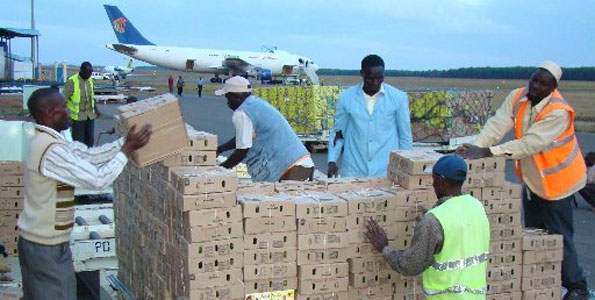Zimbabwe in bid to scale up horticulture exports
ZIMBABWE is focused on increasing horticulture production with the view of scaling up its exports volumes and increasing foreign currency earnings, Lands, Agriculture, Fisheries, Water and Rural Development Minister, Dr Anxious Masuka, has said.
Working closely with the Horticulture Development Council (HDC), the Government is keen to revive the horticulture sector, which used to be one of the top foreign currency earners.
The quest to energise exports is in line with the country’s desire to achieve an upper middle-income status by 2030.
In 2020, the Government launched National Horticulture Recovery and Growth Plan (NHRGP) to stimulate both conventional and rural horticulture production, accelerating domestic supply and exports while enhancing profitability.
The need to revive the horticulture sector came under spotlight during a recent stakeholders’ meeting in Bulawayo where producers discussed various strategies to boost output.
“In the 90s horticulture was contributing about US$143 million through exports due to better coordination from the Horticulture Promotion Council (HPC) and now to be able to meet the set targets from the sector, we have set up a new co-ordinator, which is Horticulture Development Council,” said Dr Masuka in a speech read on his behalf by a senior ministry official, Agnes Mugova.
Money – Image taken from Pixabay
“The exports declined from the year 2000 where it was at US$125 million, in 2005 dropped to US$76 million and US$24 million in 2009.
“A number of interventions are underway like the ease of doing business and enabling policy and regulatory environment to improve export growth for the horticulture sector,” said the minister.
By adopting the NHRGP, the Government has expressed its commitment to reform, restructure and transform the agricultural sector from US$5,2 billion earnings to US$8,2 billion by 2025.
The plan, thus, acknowledges that the sector has the potential to drive the transformation of agriculture and in the process, complementing efforts towards the attainment of Vision 2030 through import substitution, food security, increased exports and raising household income.
The NHRGP is anchored on the Presidential Horticulture Scheme, which promotes household tree planting and village nutrition gardens and ward-based youth village nutrition gardens.
“The programme targets 18 million fruit trees, 25 000 village nutrition gardens, and 9 600 schools’ nutrition gardens and 9 600 school orchards by 2025,” said Dr Masuka.
Speaking at the same occasion, Adventist Development Relief Agency (ADRA) International programmes manager, Ms Kate Morrison, said her organisation has partnered with Government to promote smallholder horticulture farmers to improve their output and realise higher economic potential.
“The programme helps in educating farmers on how to use chemicals and fertilisers to produce quality products that can be able to meet export standards and also we work with women and youths,” she said.
“Our mandate is to improve their livelihoods so that they can be able to continue farming even after the project is over.”
ADRA is a humanitarian agency operated by the Seventh-day Adventist Church and serves in more than 118 countries through local offices and partners to alleviate poverty.
Acting provincial director agricultural advisory and rural development in Matabeleland North province, Mr Dumisani Nyoni, urged farmers to do their part by embracing modern technologies and riding on supportive policies to boost their projects.
“As farmers, let’s work hard and not wait for the Government to spoon-feed us. The Government has done its part including giving us land, and it’s now up to us to make our country move forward,” he said.
Zimbabwe used to be a major producer and exporter of a variety of horticultural crops driven by favourable climatic conditions, strong farming skills and access to favourable export markets. The main export market was Europe for cut flowers, fruits and vegetables. — The Chronicle











